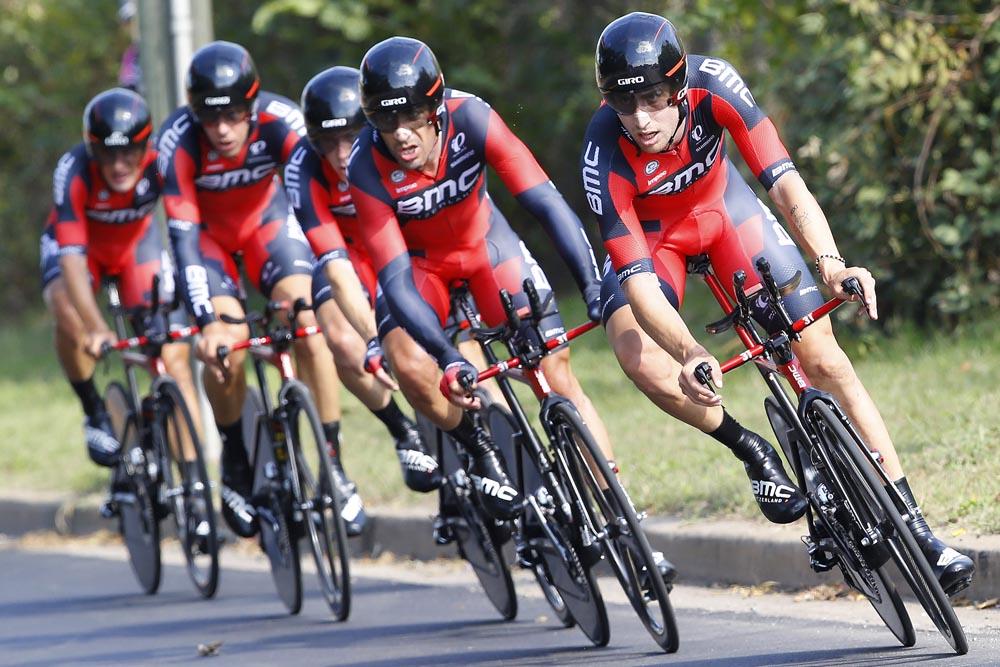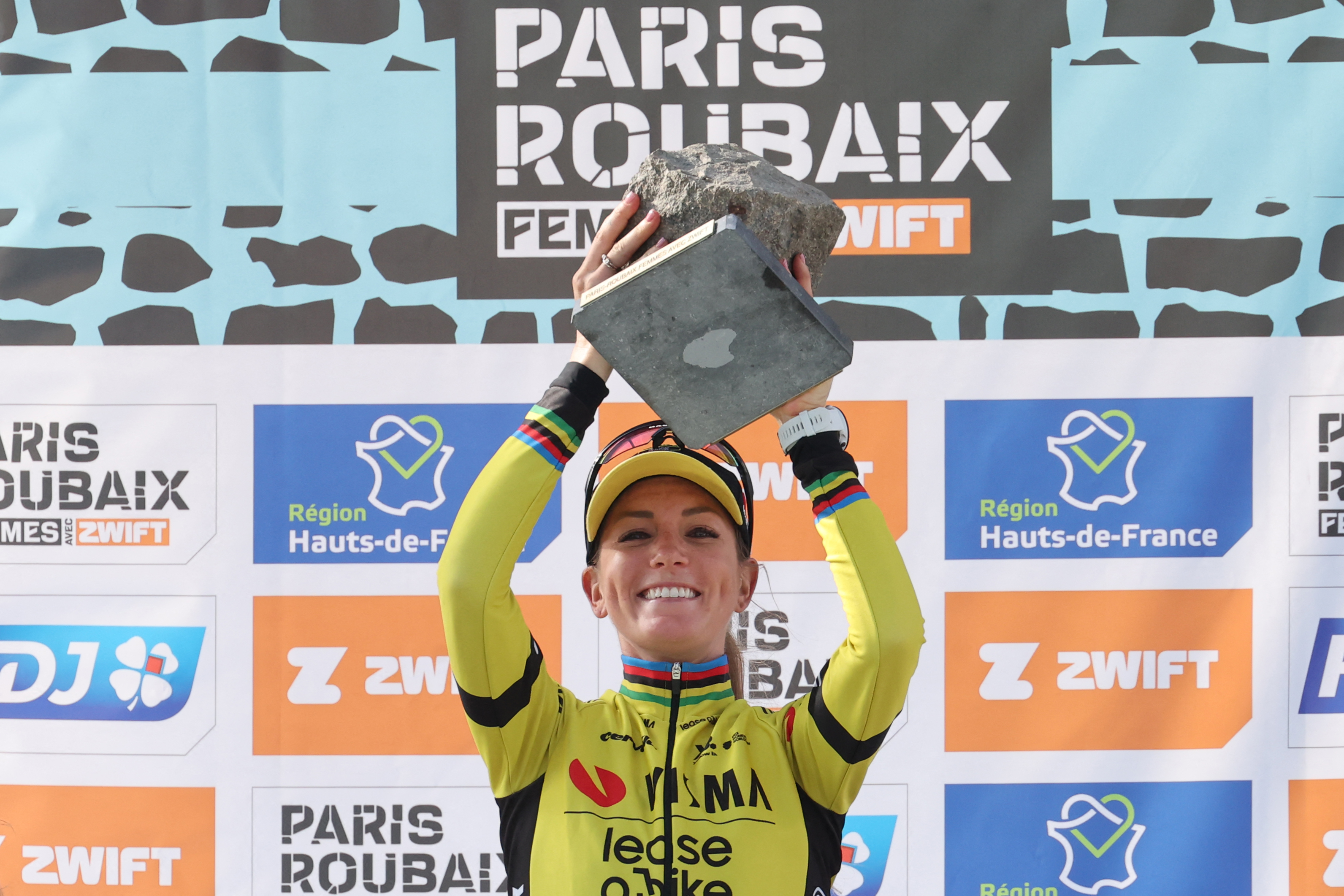What is the Hammer Series, and how does it work? (video)
Everything you need to know about the new three day race

BMC in the Mens TTT at the 2015 World Cycling Championships
Run over three days, the inaugural Hammer Series event (June 2-4) will take place in Limburg, with new racing concept that pits riders against each other in a bid for team rather than individual glory.
The Hammer Sportzone Limburg is split into three different events: the Hammer Climb on June 2, featuring 11 laps of a seven kilometre hilly circuit; the Hammer Sprint on June 3, featuring eight laps of a 12.4km flat circuit; and the Hammer Chase on June 4, a 44km team time trial.
The first two races are effectively points races, with teams competing to pick up points and bonus seconds that will decide their starting positions in the final Hammer Chase team time trial, which is run in a pursuit format.
>>> Velon launches new team-based pro cycling race series
How does it work?
Get your calculators out and make sure you've go a sheet of paper to hand while watching, as this is going to get complicated.
In both the Hammer Climb and the Hammer Sprint, points are awarded to the first ten riders across the finish line at the end of each lap (10, 8.1, 6.6, 5.3, 4.3, 3.5, 2.8, 2.3, 1.9 and 1.5). However these points are doubled on laps three, seven, and 11 of the Hammer Climb, and laps two, five, and eight of the Hammer Sprint.
Get The Leadout Newsletter
The latest race content, interviews, features, reviews and expert buying guides, direct to your inbox!
The team whose riders have accrued the highest number of points in each event are declared the winners, and the top 10 teams are awarded 15, 12, 10, 8, 6, 5, 4, 3, 2 and 1 bonus seconds, which count towards the final Hammer Chase team time trial.
For the purposes of safety, the teams in the Hammer Chase are split into two groups, with eight teams in each group based on their rankings in previous events. This means that lower ranked teams from group two are not able to challenge for the overall Hammer Series event win, but can win the Hammer Chase itself.
In this race teams are set off at fixed intervals depending on their positions in the earlier races:
- Position 1: First to start
- Position 2: at 30 secs
- Position 3: at 55 secs
- Position 4: at 1-15
- Position 5: at 1-30
- Position 6: at 1-45
- Position 7: at 2-00
- Position 8: at 2-15
However, added to these are bonus seconds that teams will have picked up along the way, so if the leading team has won both races and picked up 30 bonus seconds, while the second team as picked up 22 bonus seconds, then the team in position two will start 38 seconds behind.
Thankfully, once everyone's set off, the racing becomes very simple, and the winner is the first team to cross the line.

Thank you for reading 20 articles this month* Join now for unlimited access
Enjoy your first month for just £1 / $1 / €1
*Read 5 free articles per month without a subscription

Join now for unlimited access
Try first month for just £1 / $1 / €1
Henry Robertshaw began his time at Cycling Weekly working with the tech team, writing reviews, buying guides and appearing in videos advising on how to dress for the seasons. He later moved over to the news team, where his work focused on the professional peloton as well as legislation and provision for cycling. He's since moved his career in a new direction, with a role at the Department for Environment, Food and Rural Affairs.
-
 Pauline Ferrand-Prévot: ‘It wasn’t the plan to ride Roubaix but I felt good so I said why not?’
Pauline Ferrand-Prévot: ‘It wasn’t the plan to ride Roubaix but I felt good so I said why not?’Frenchwoman admits that her aim for her unexpected Roubaix debut was to support Visma | Lease a Bike teammate Marianne Vos
By Peter Cossins Published
-
 Pauline Ferrand-Prévot takes a sensational home victory in Paris-Roubaix
Pauline Ferrand-Prévot takes a sensational home victory in Paris-RoubaixFrenchwoman wins her Hell of the North debut as Letizia Borghesi takes second place and Lorena Wiebes is third
By Peter Cossins Published